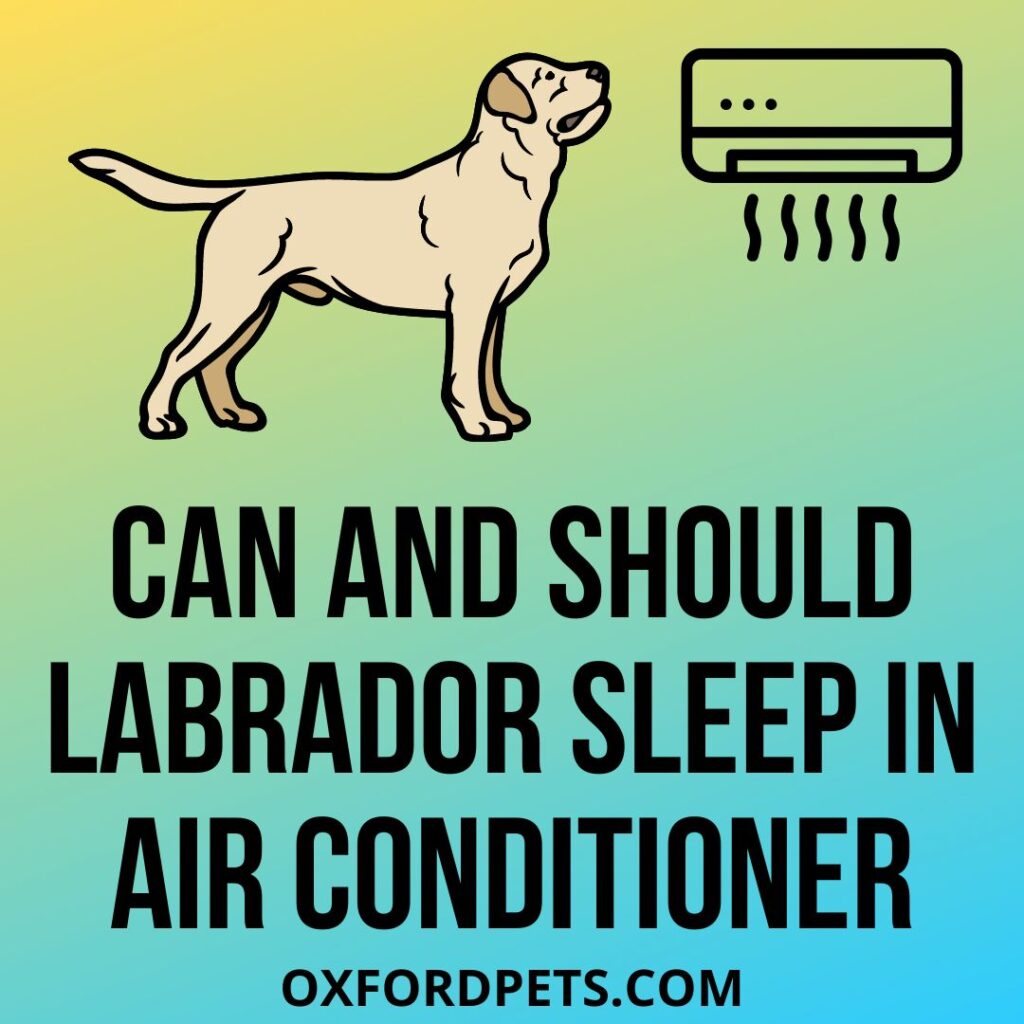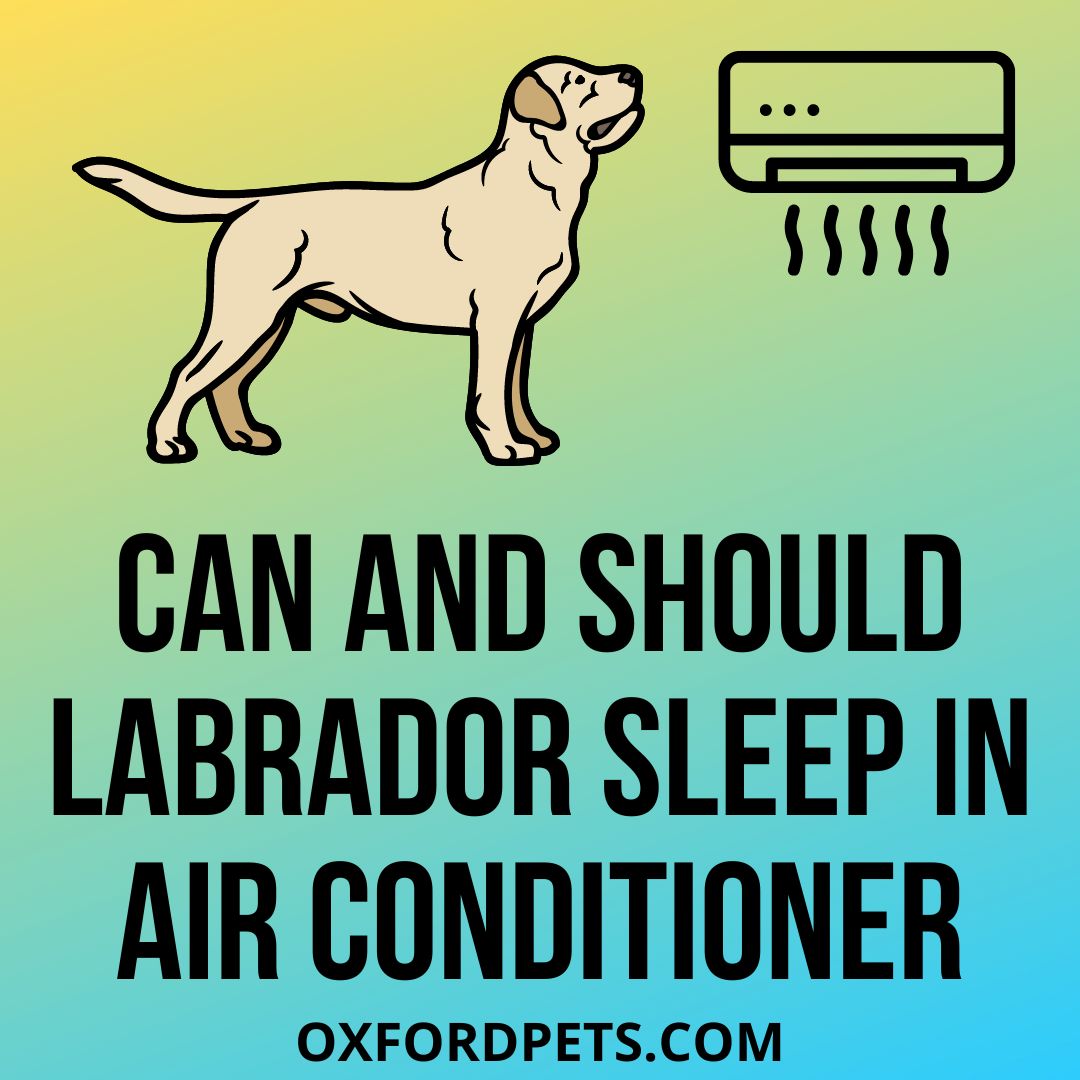People love giving their dogs the best materialistic facilities they can, but is it all worth it?
Labradors are known for their natural ability to adjust to various climatic conditions and temperature fluctuations. This worldwide breed can adapt to variously given atmospheres, and that is why they are owned almost all across the globe. Be it the winters or the scorching summers, you will observe Labradors at different places making their way out comfortably. But given harsh weather considerations, Is it Ok to keep Labradors in an artificially temperature-controlled environment? Can Labradors survive comfortably in an Air-Conditioned Room?
Well, Yes, Labradors can comfortably make it inside AC rooms. Even various pet enthusiasts invest in air-conditioned dog kennels to keep their Labradors secure during summers. Whereas simultaneously, there are owners who allow their Labradors inside their Air-Conditioned bedroom, and that is completely Ok. However, the first key to keeping Labradors or pets in general in Air Conditioner is ‘Do not Overdo it.
Contents
- How to use the Air conditioner without the risk of Labradors?
- Ideal Air Conditioner temperature for keeping Labradors
- What temperatures can Labrador handle?
- PROS and CONS of Air Conditioner for Labradors
- Can Labradors get cold from Air Conditioners?
- Is it safe to keep Labrador puppies in an Air-Conditioned room?
- Temperature Recommendations for Puppies:
- Wrapping up…
How to use the Air conditioner without the risk of Labradors?
The excessive and uncontrolled use of Air conditioners for humans isn’t safe, and the same goes for dogs as well. It is important to take care of your dog’s comfort during summer but reaching a point where artificial technology plays with their health is not recommended.
To maintain the natural thermoregulation mechanism of dogs, it is important to ensure a steady flow of heat and humidity around them. However, pet owners often forget to maintain the same while they provide their Labradors with the comfort of AC. But with that, using a humidifier or utilizing the dehumidifier function becomes compulsory. Doing so will help in managing the basic atmospheric need of dogs without ceasing any temperature necessities around.

Ideal Air Conditioner temperature for keeping Labradors
If you are allowing your Labrador in an Air-Conditioned room, make sure not to set a very low thermostat. An ideal AC temperature for your Labrador would be between 22 degree Celsius to 26 degrees Celsius. Just as they risk heat strokes, dogs can also fall under the risk of extremely low AC temperature.
Also, when you let the dog in and out multiple times a day, ensuring an ideal AC temperature becomes very important. For example, the dog will go various times out of the house for walks and experience a high temperature.
And similarly, at home, they will spend more time in low AC temperatures. This combination of rising and fall in temperature can overhang and make the dog feel sick. It may also expose your Labrador to dangerous respiratory diseases.
What temperatures can Labrador handle?
Labrador is an extremely temperature-adaptable breed, and they can handle temperatures as low as -6 degrees Celsius and as high as 33 degrees Celsius (20 to 90 degrees Fahrenheit). The ideal humidity recommendation for Labradors is between 20% to 30%. However, that’s only the recommendation but not a thumb rule.
However, before that, let’s learn about the term ‘Homeostasis’.
Homeostasis is a crucial process where organisms, including Labradors, maintain stability and adapt to different climatic conditions for the best of their survival.
This, in simple terms, means that Labradors will adapt and adjust when it is too hot or too cold. The process goes well managed until the temperature considerations change drastically.
Extreme temperature changes, though, can’t hamper Homeostasis.
PROS and CONS of Air Conditioner for Labradors
Air Conditioner, like any other electronic, brings so much peach to life. However, since it generates artificial air, there are multiple benefits and disadvantages associated along. Here we have the spotlight on a few of them.
Advantages of Air Conditioner for Labradors
- Air Conditioner restrains the entry of pollens, mildew, mold, and other harmful external agents. And restricting these entries also aids in purifying the air.
- Air Conditioner controls the temperature while leaving your dog sweat-free and relaxed.
- Air Conditioners reduce the chances of heat strokes.
- For dogs suffering from allergies and asthma, Air Conditioners are the saviour. They decrease the growth of dust mites and mold by lowering indoor humidity.
- Staying in an Air-Conditioned environment can lessen the risk of dehydration amongst dogs.
- Air Conditioner aids in improving a good night’s sleep.
Disadvantages of Air Conditioner for Labradors
- Air Conditioners devour humidity, and it, as a result, can lead to respiratory problems like nasal congestion in dogs.
- Continuous and long-term usage of Air conditioners can initiate heat intolerance amongst Labradors.
- Air Conditioners stiffen bones and muscles and introduce lethargy and sluggishness.
- Excessive usage of Air conditioners can weaken dogs’ immune systems and may also result in bad for their circulatory system.
- Air Conditioner usage may make your Labrador lose skin moisture leading to dryness.
Can Labradors get cold from Air Conditioners?
Yes, if the temperature is too low, Labradors can get cold or even sick.
Therefore, while you are allowing your dog in an AC room, make sure the temperature isn’t too cold or uncomfortable.
Is it safe to keep Labrador puppies in an Air-Conditioned room?
Puppies (of Labrador or any other dog) can control their body temperature until they turn one week. Therefore, until then, it is important to keep them wrapped and far away from air conditioners. Later once they start gaining their body temperature, you can adjust the room temperature slightly. However, it is better to have a thermometer at home, to be extremely precise.
Temperature Recommendations for Puppies:
- 26.7 degrees Celsius or 80 degrees Fahrenheit (1 week-old puppy)
- 22 degrees Celsius or 72 degrees Fahrenheit (2 to 3 weeks old puppy).
- 22 degrees Celsius or 72 degrees Fahrenheit (1 to 2 months old puppy).
- 22 degrees Celsius or 72 degrees Fahrenheit (For up to 12 weeks or 3 months old puppy).
Wrapping up…
Labradors can survive in a variety of climatic conditions and handle different temperatures. However, while you allow them in AC rooms, make sure you also pay close attention to humidity.
Also, make sure you are not exposing them to a very low temperature or AC for very long. Ensure being observant and monitor how your dog is reacting. If you find something odd, it is better to find out the cause behind the same.
